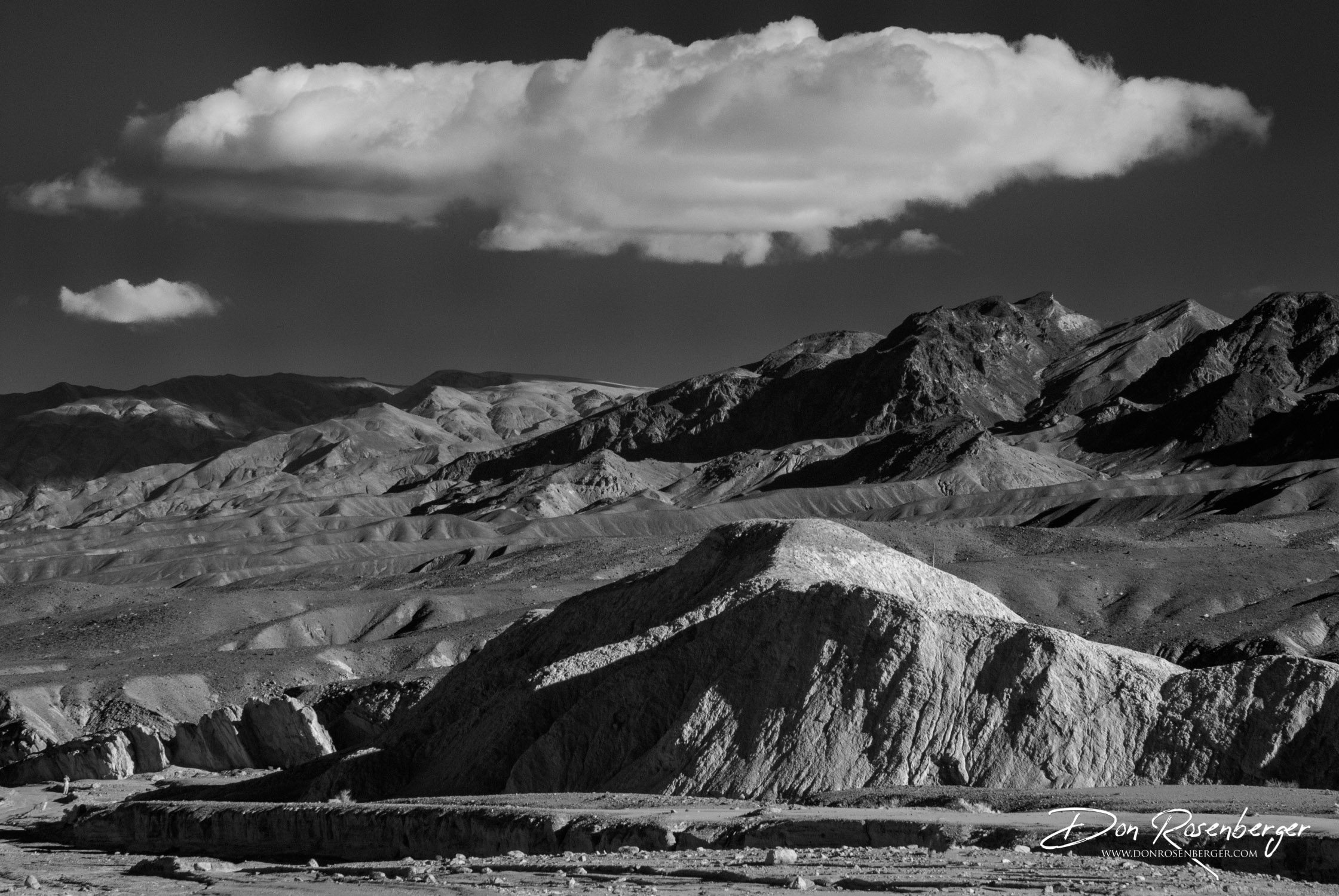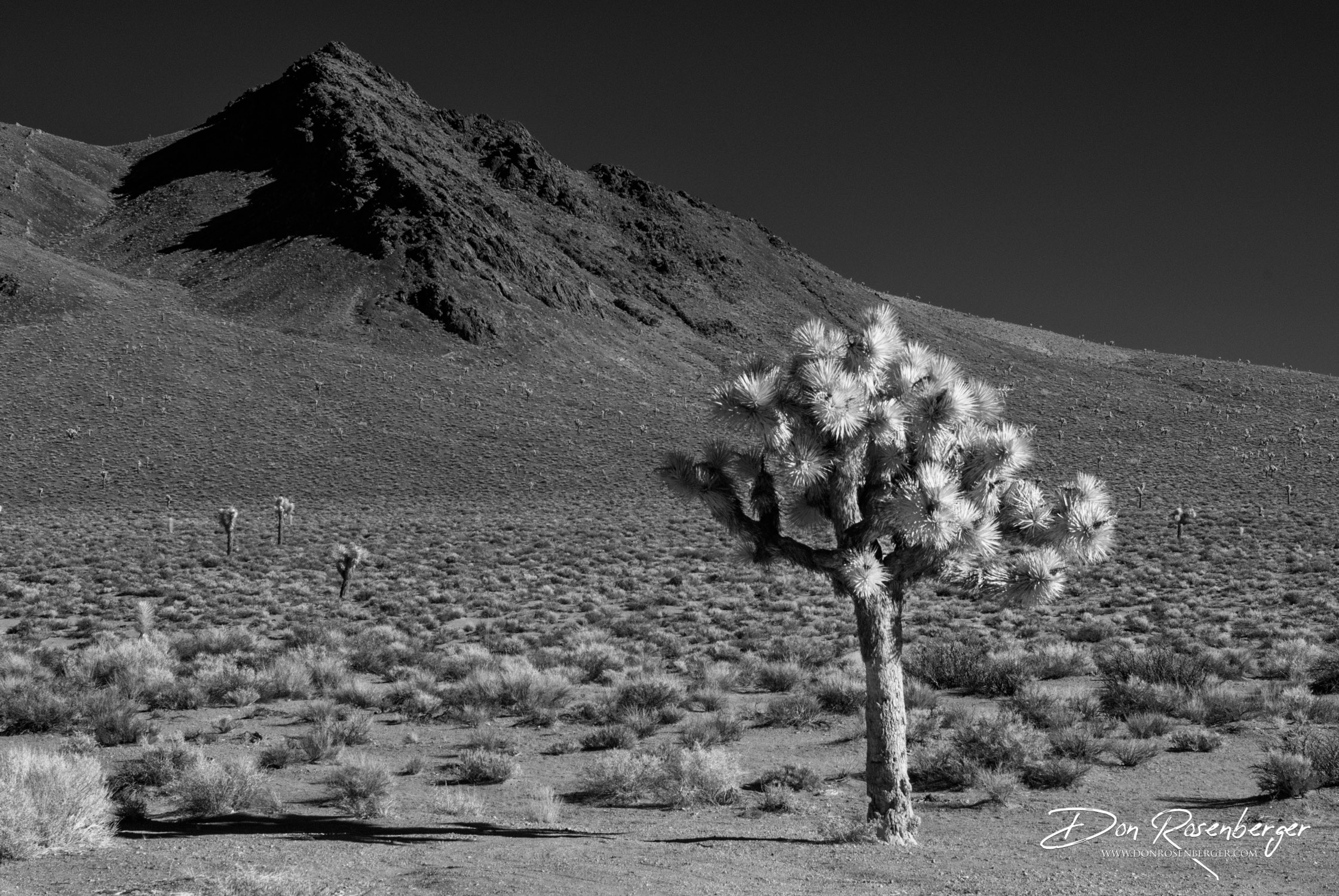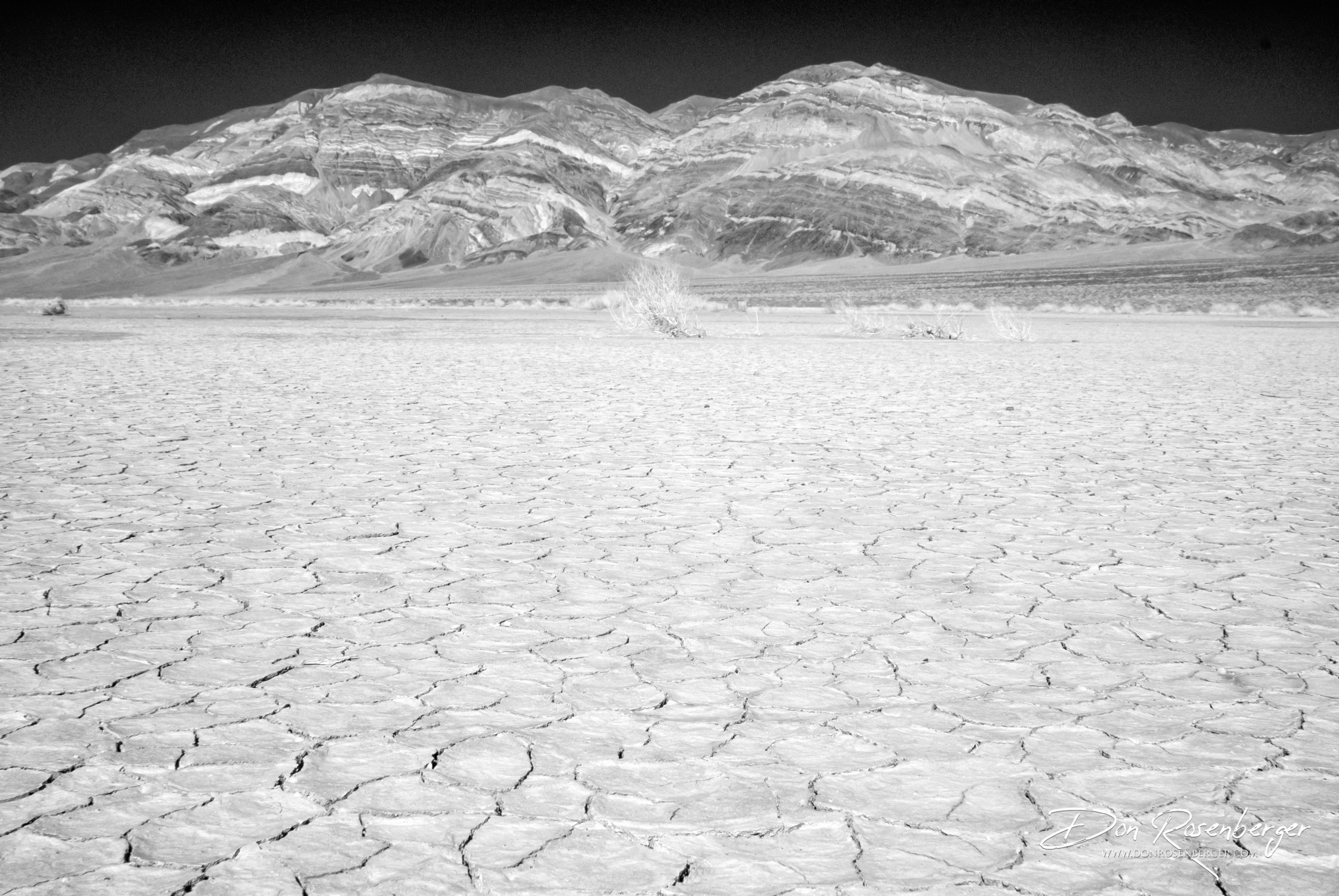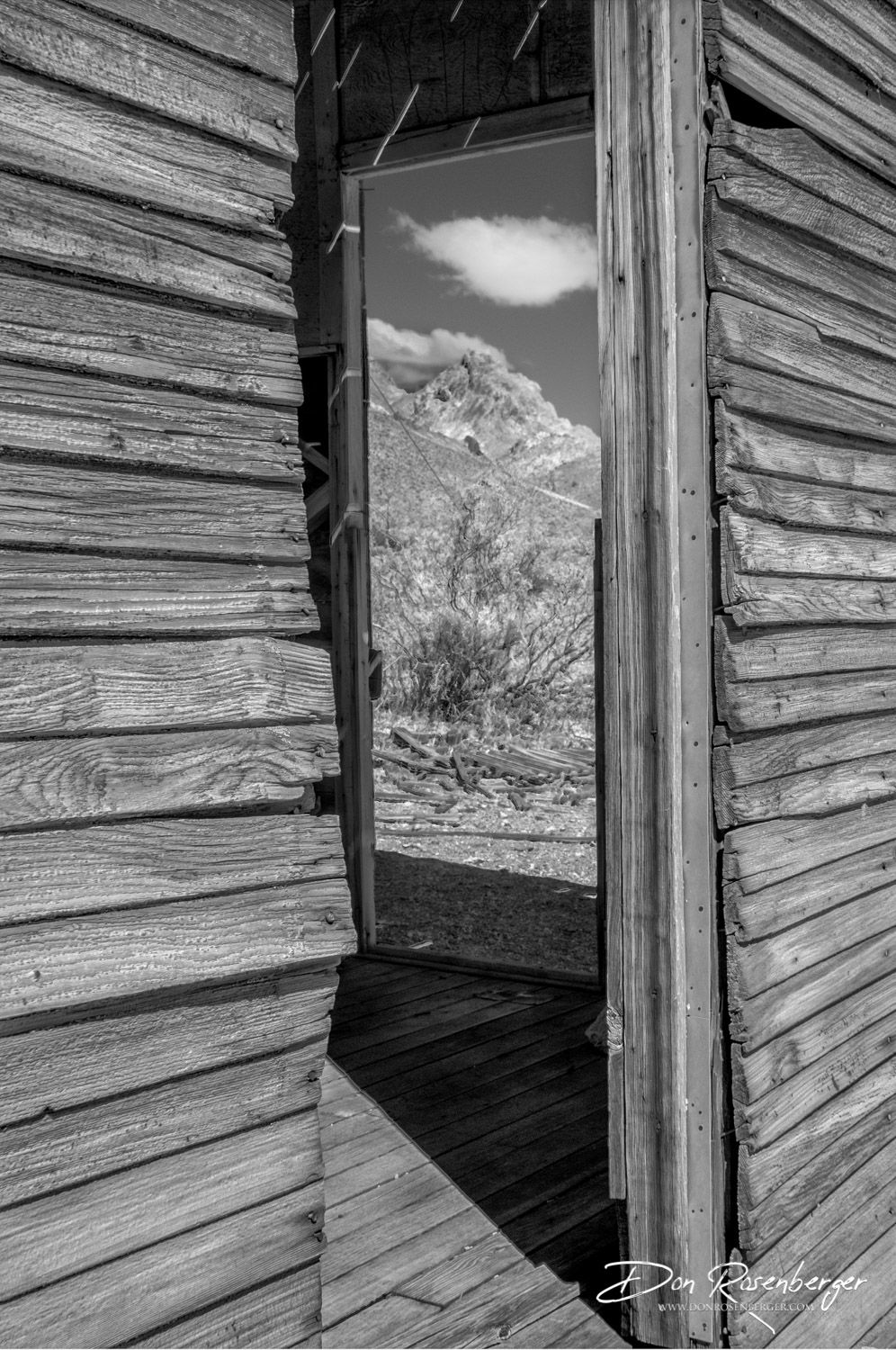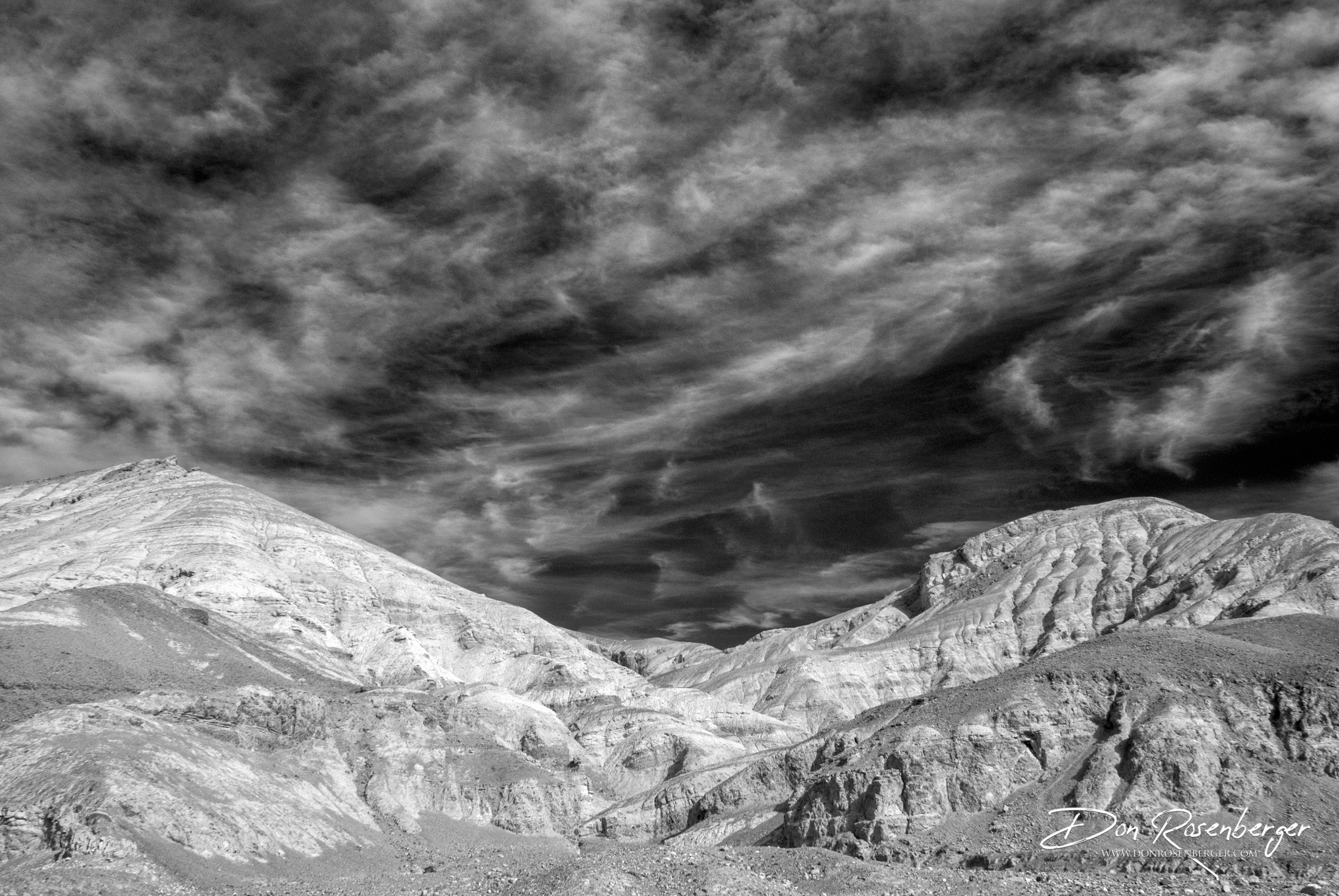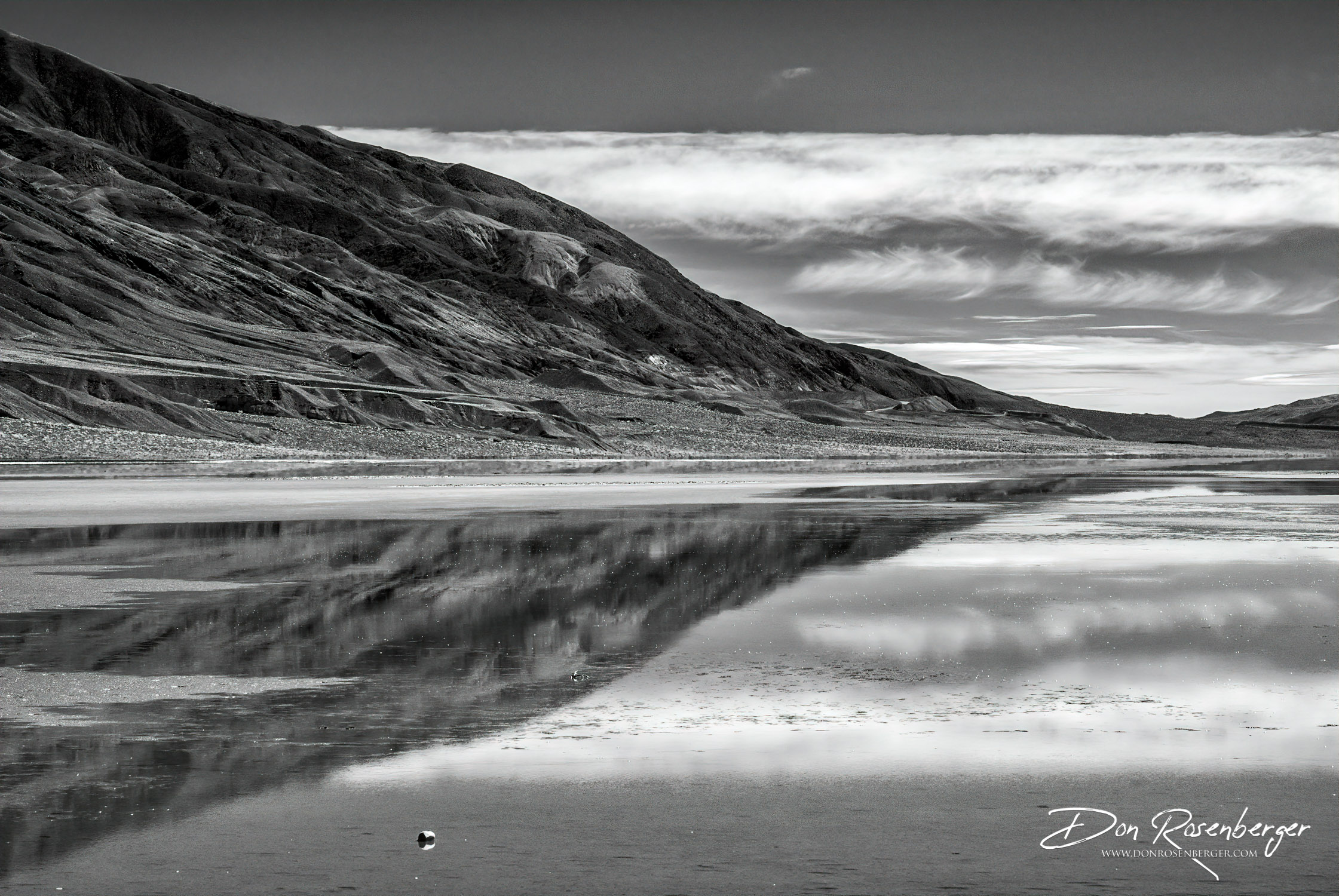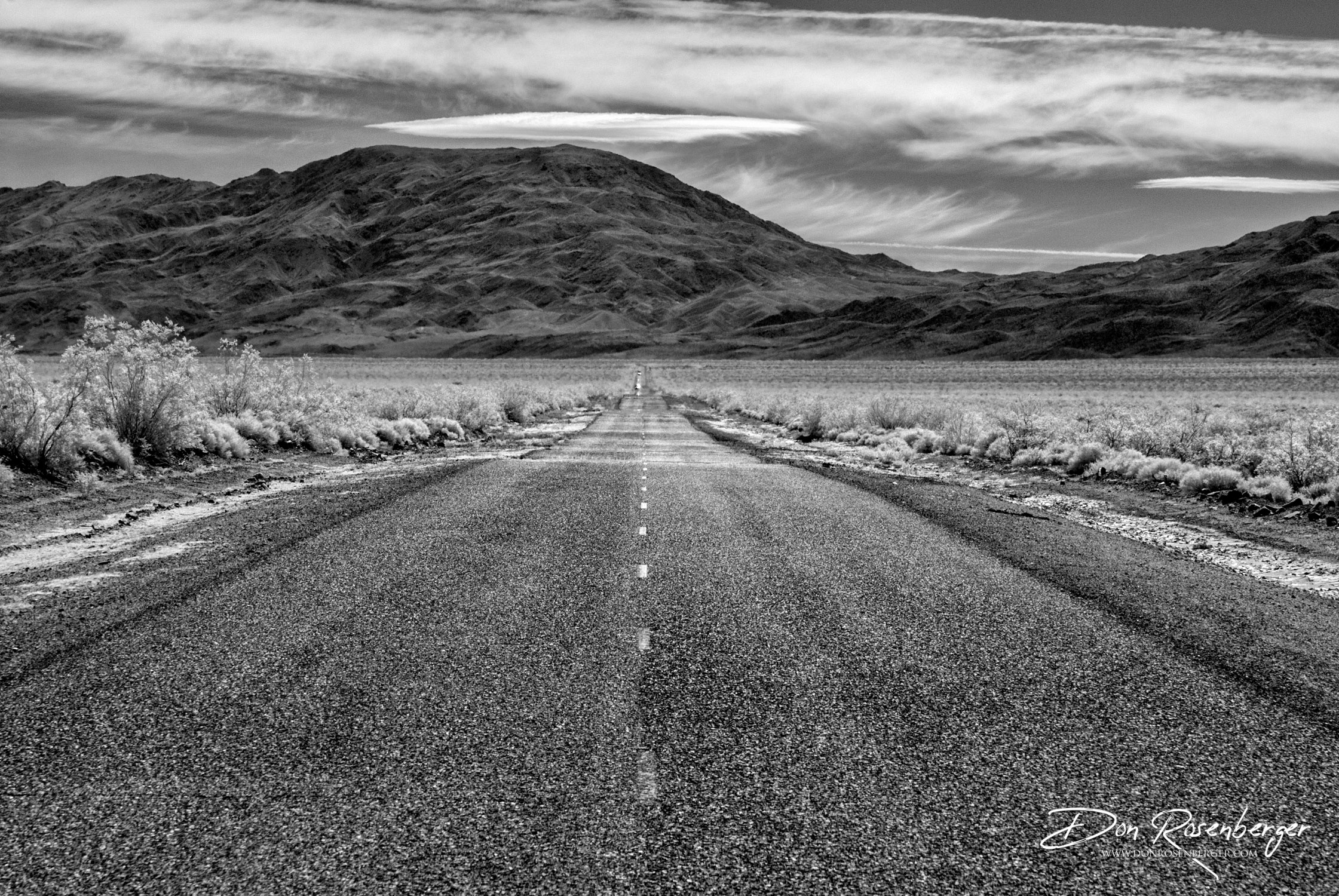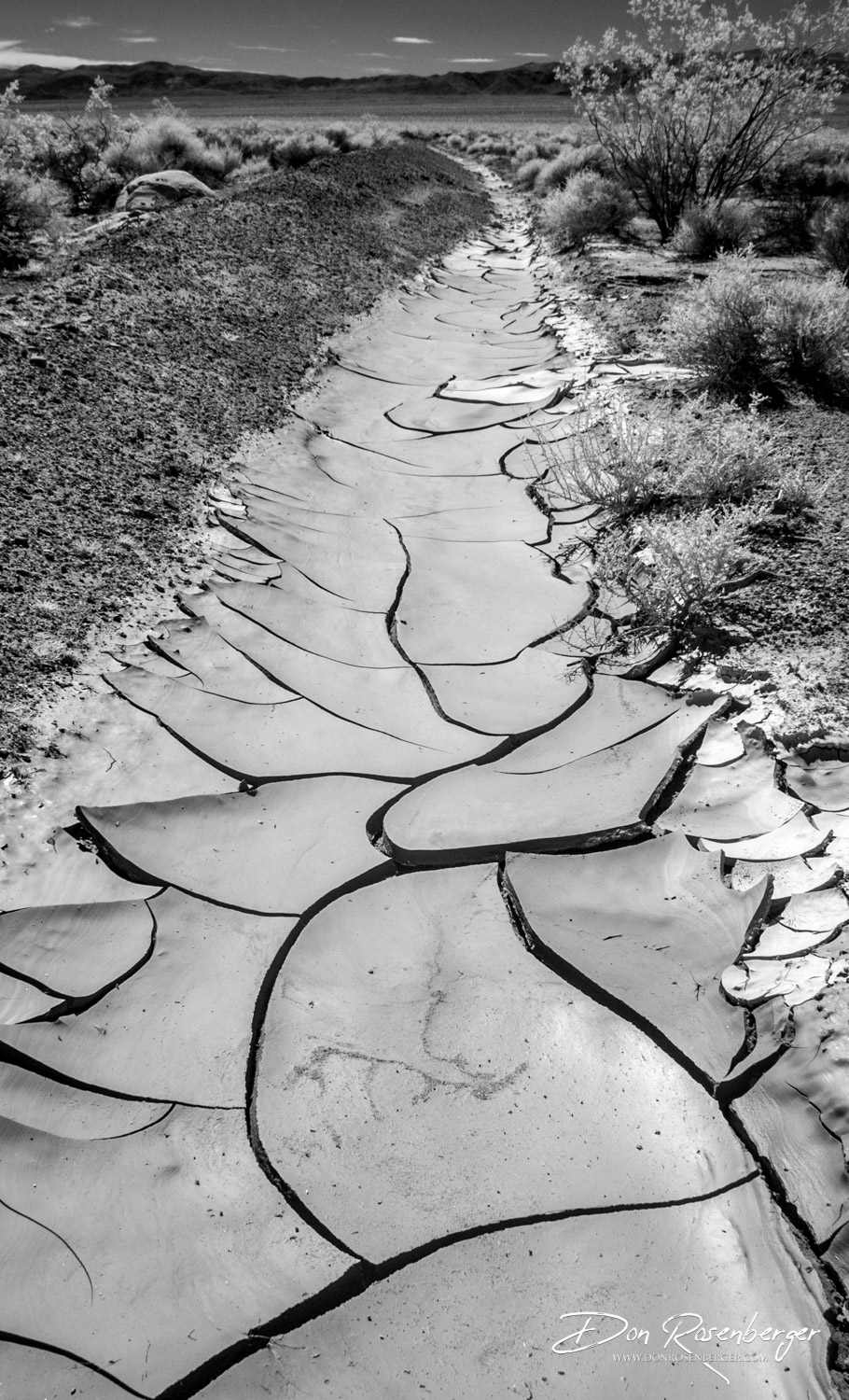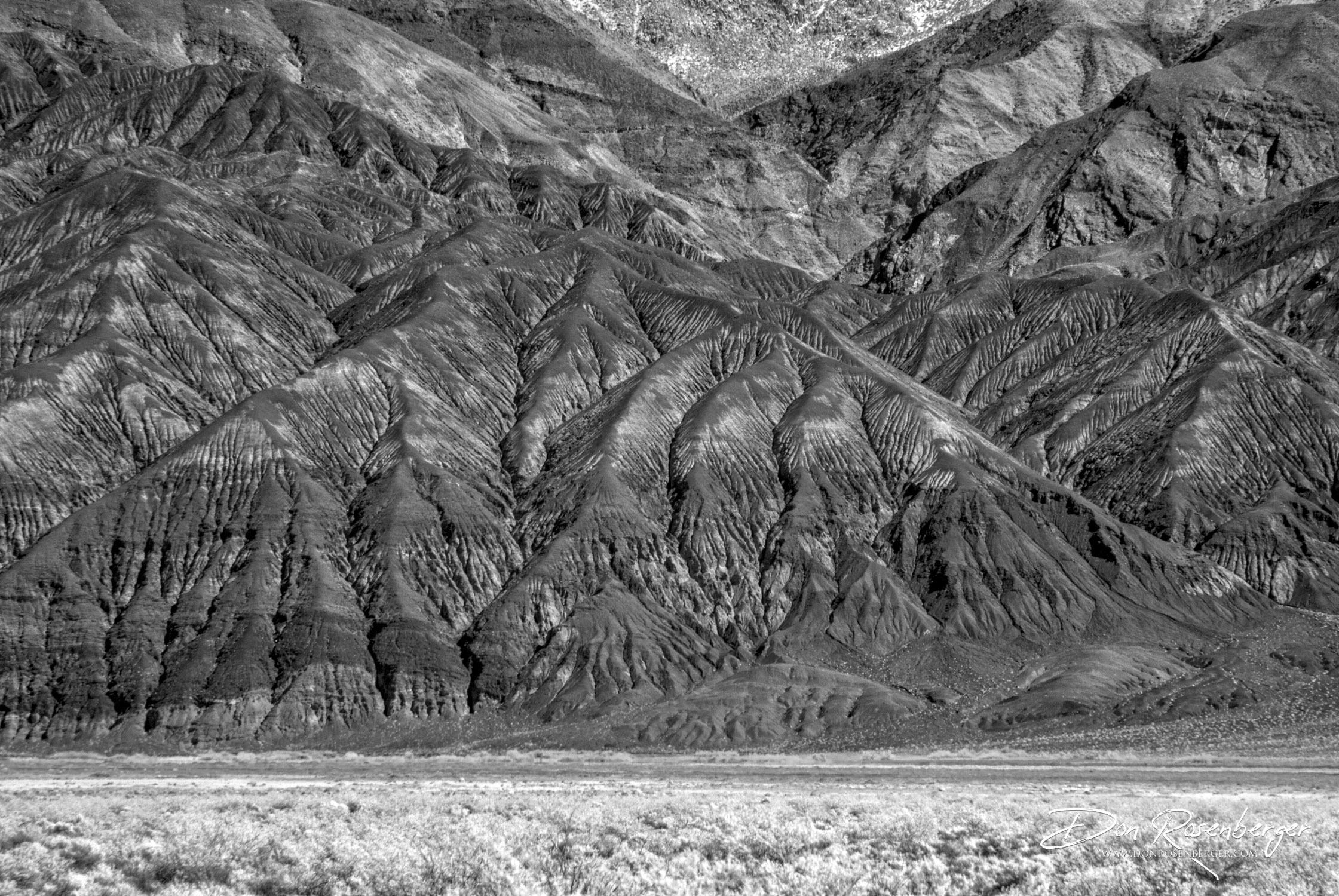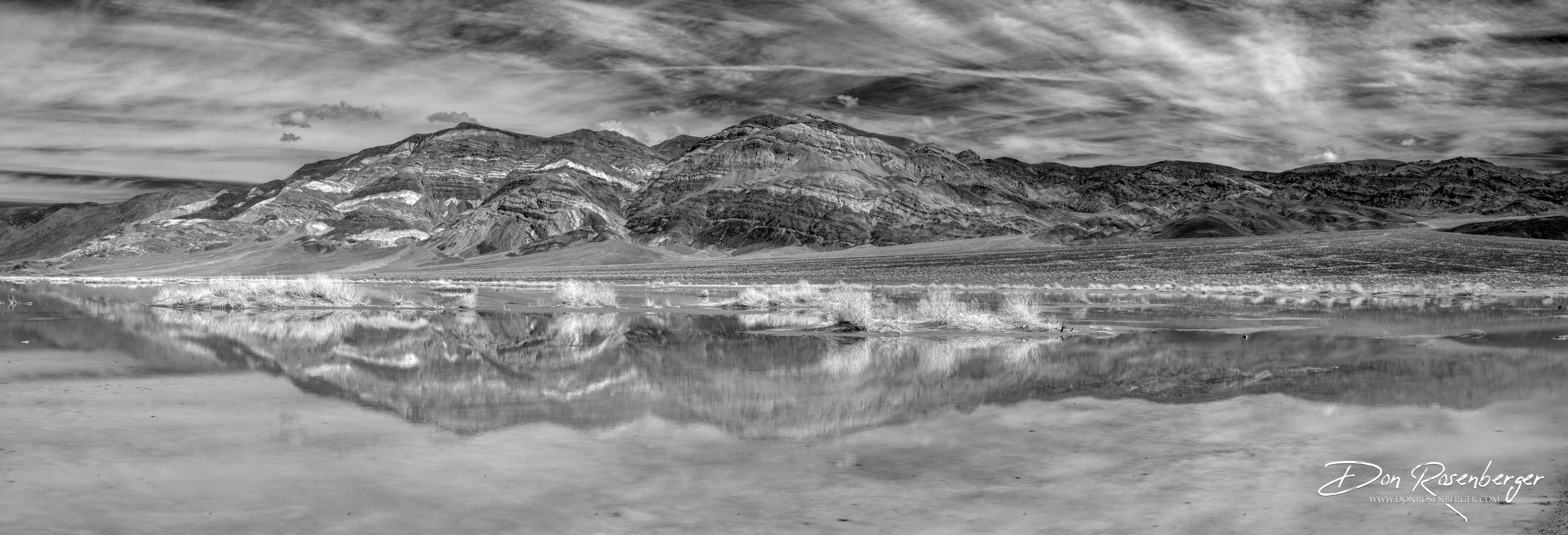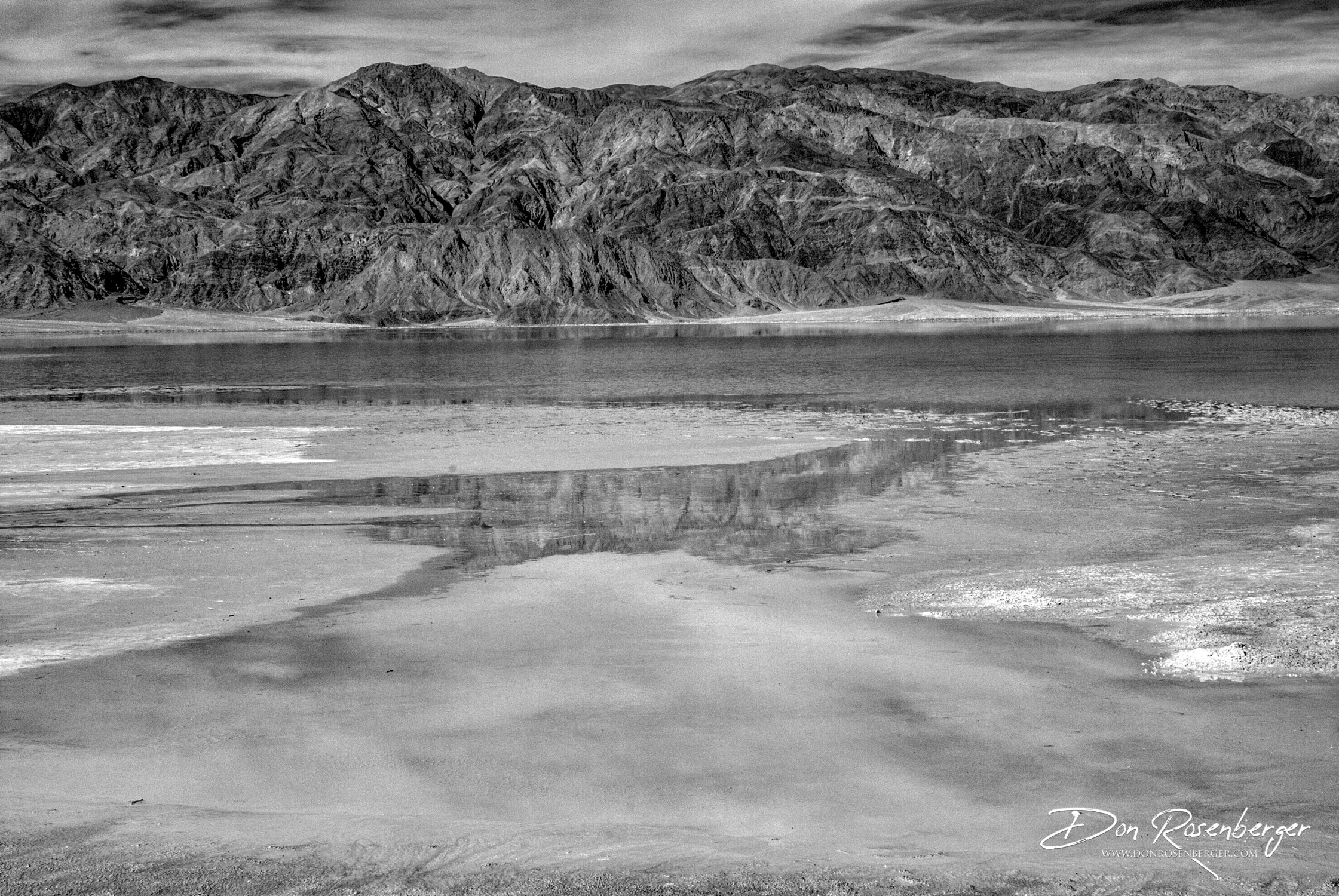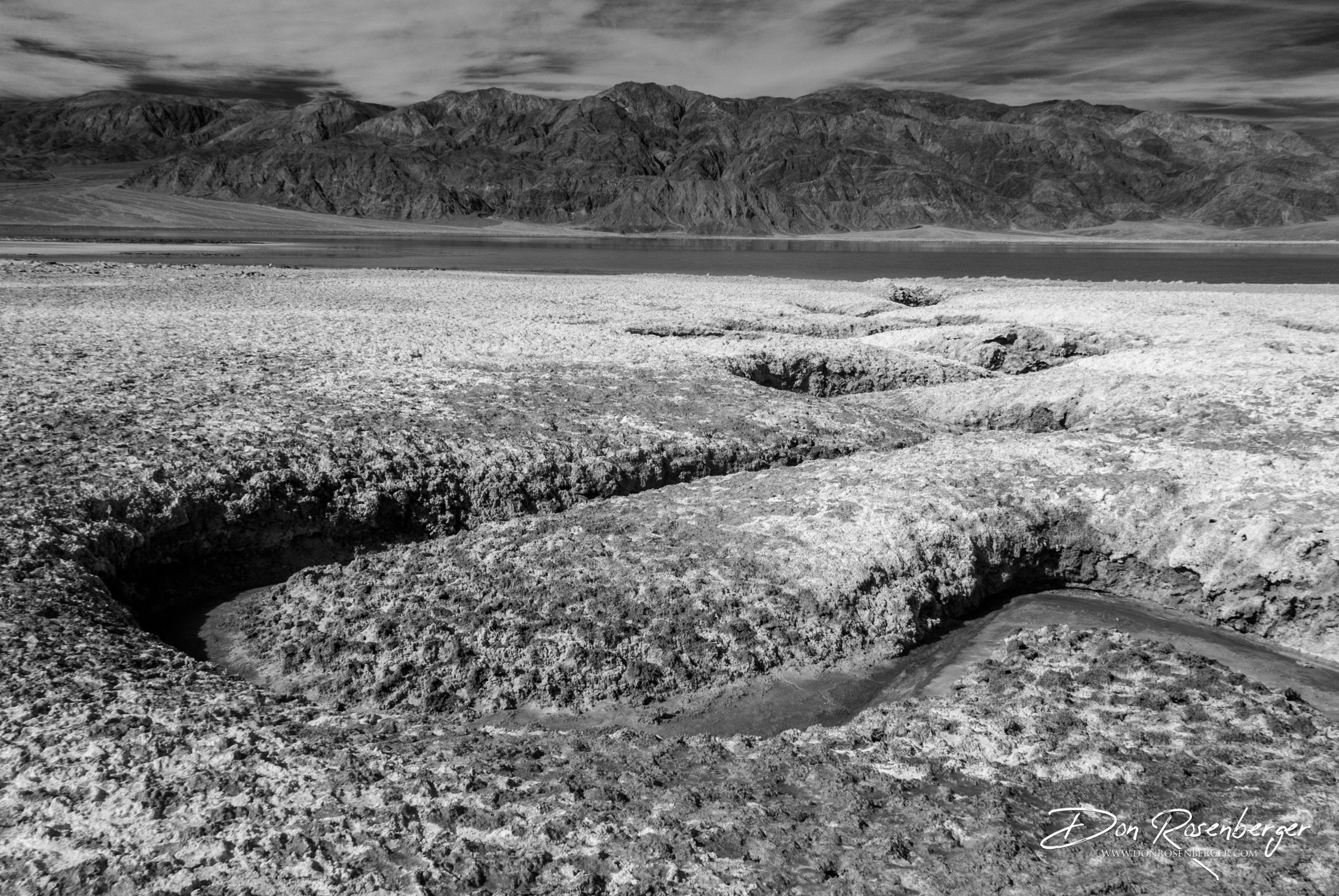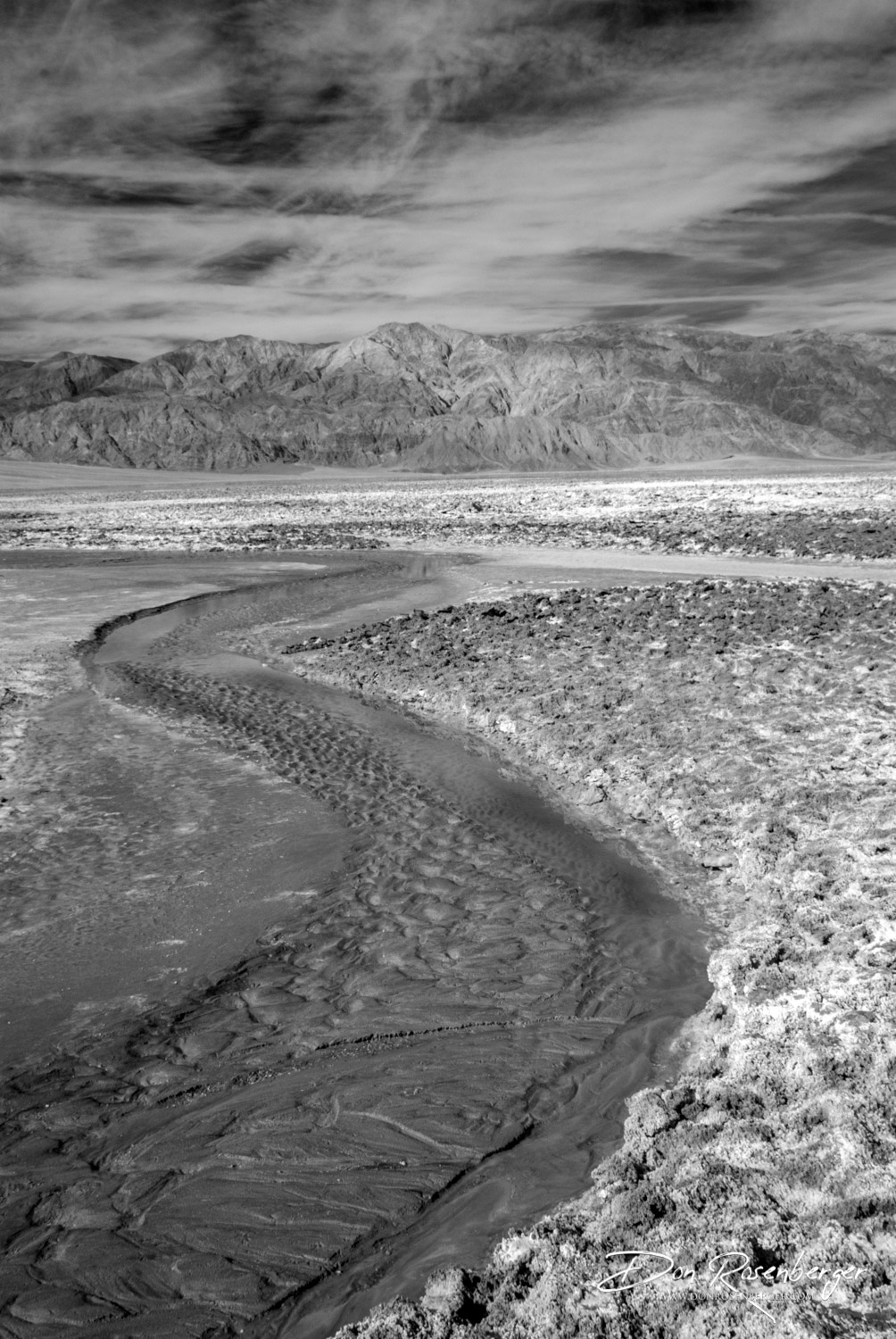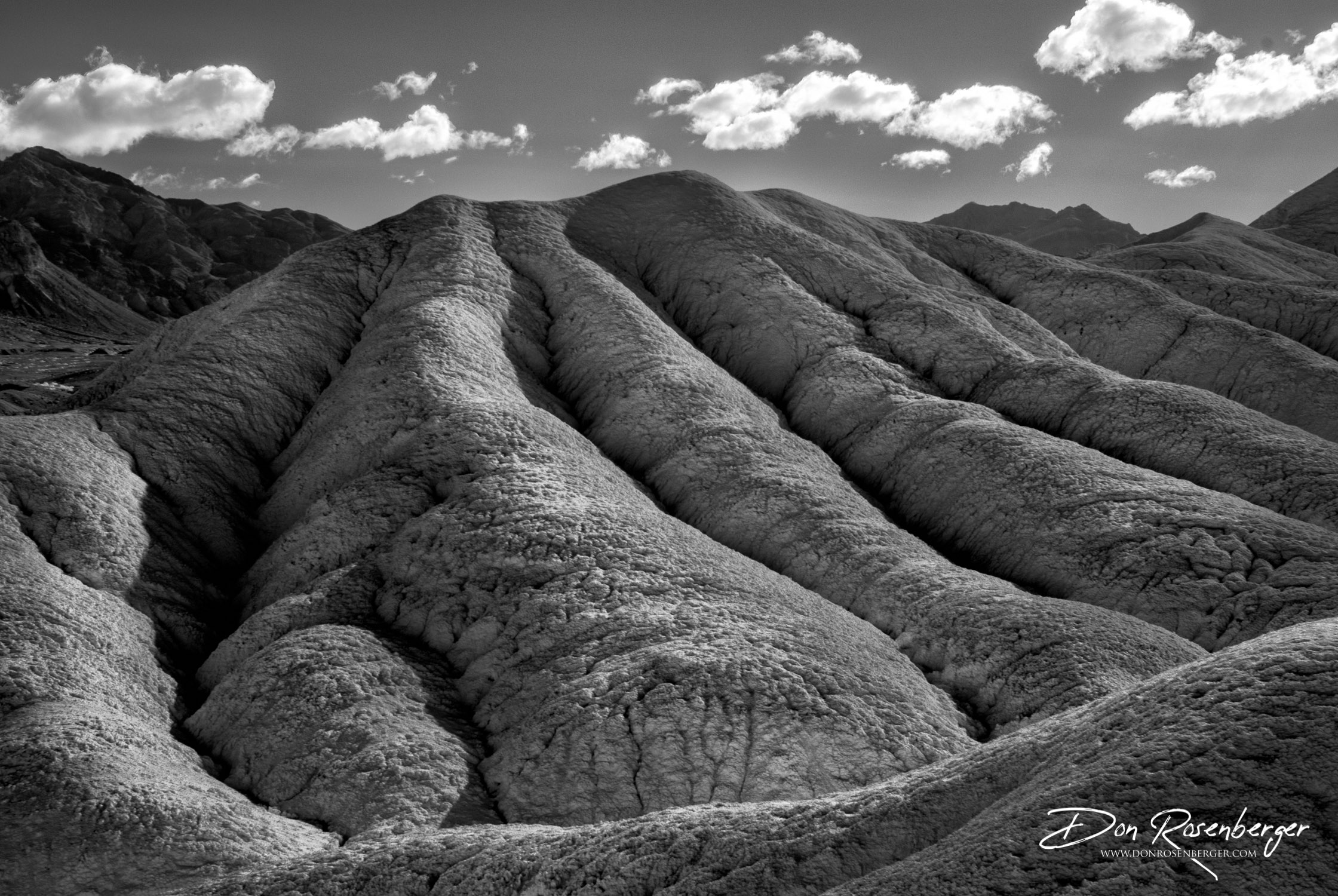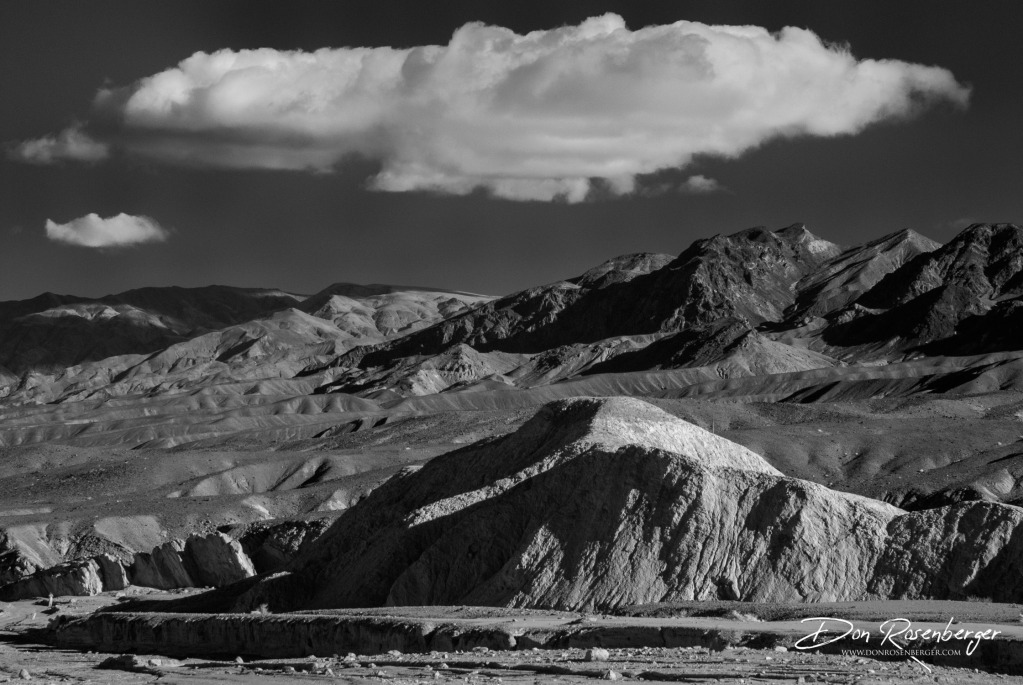
My intention was to write this and several other blogs soon after returning home from Death Valley in March. But time slipped away and as I write this I’m packing for another adventure that I will share in the coming weeks and months.
Death Valley is an incredibly beautiful landscape if you know how to see it. Any landscape photographer would indeed “see it”, so I claim no special powers or abilities. For the average person driving through Death Valley it might look like a stark and barren landscape, especially in the absence of clouds or early morning or late afternoon light. Some might start talking about the right light or perhaps there is no such thing as good light, it’s knowing how to use the light. But I’m going to skip right past those discussions and talk about and show lots of examples of shooting in Infrared.
I’m specifically talking about digital infrared, not film infrared. This is when you send your camera to a company like Kolari Vision or LifePixel for conversion. I have used both of these companies and I highly recommend them. The process of conversion involves removing the filter that currently covers your image sensor that blocks all but visible light and replacing it with a filter that only allows the transmission of a specific spectrum of infrared light The light wavelength range is typically from 550 to 850 NM and the effects range from color to black and white.
I have both a color and a black and white conversion. My preference is for black and white images. The main reason I love infrared so much is it allows me to shoot all day long, with never a need to take a midday break because the light is just too harsh for color landscape photography.
![]()
